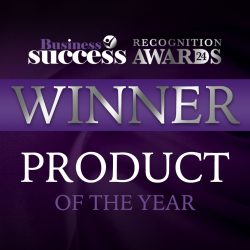Safeguard your brand in the UK
Trade Mark Most Asked Questions
Straightforward, fairly priced trade mark registration
Packages & Cost
Our packages for those who wish to protect their brands in the UK.
The Process
To register a trade mark across the entire European Union, the most efficient method is to file a European Union Trade mark (EUTM) application. This application covers all 27 EU Member States. The registration process typically takes about 4-5 months, so long as there are no objections.
The EUTM provides protection in every EU member state. A single similar trademark in any member state can lead to the rejection or cancellation of your application.
If accepted your ™ is registered for 10 years

Trade Mark Name or Logo
Whether to trade mark your name, logo, or both is a common question. Each option offers different types of protection and has implications for enforcing rights in the case of infringement.
To help you navigate this decision, we’ve compiled answers to some frequently asked questions, providing clarity on the benefits and legal safeguards associated with trademarking your brand’s key elements. Whether you’re leaning toward securing your business name, logo, or considering both, we aim to answer all your questions so you can make an informed choice.
A word mark is a type of trade mark that protects the word itself. It is usually used to trade mark brand names or slogans.
A word mark doesn’t protect the graphical depiction of the text. This means that after registering a word mark, you can use it in a variety of fonts, colours, and contexts. However, the downside is that the protection extends only to the word, so if someone copies your standard styling but applies it to a different word, that wouldn’t be considered trade mark infringement.
Another implication is that the distinctiveness of a word mark can only result from the word itself. Therefore, a word mark might have a higher chance of refusal than other trade mark types. This is because a brand name is more likely to be descriptive of the products/services the brand offers or similar to other already registered word marks. With a figurative trade mark, there are naturally more options to distinguish the mark, both objectively and from others.
Although a word mark might seem less desirable than a figurative trade mark, the choice is not that clear-cut, and a word mark offers its own advantages. It provides a broader level of protection compared to a figurative mark, which can only be used exactly as registered. Also, a name is a more identifying element for a brand than its logo, and something consumers are more likely to remember.
Note: In graphic design, a word mark (or wordmark or logotype) refers to a distinct text-only typographic treatment of the brand name, including the font and other stylistic elements. Google’s logo is a good example. Bear in mind that these terms have different meanings in their respective fields. In IP law, a word mark would only protect the name ‘Google’ itself.
A figurative trade mark, or a logo trade mark, is a mark that includes specific visual elements. It can be a custom font, an icon, a drawing, or a graphic feature.
A logo trade mark must be associated with particular goods and services that a brand sells to be registrable.
Similarly, the logo mark must be unique enough to indicate a source of given goods and services and distinguish them from other goods and services on the market. If the logo is too generic, it can be refused by the IP office due to a lack of distinctive character.
A figurative mark can solely consist of stylised text – for example, the Coca Cola logo. It can also be strictly visual, not including any letters, numbers, or symbols. Another type of logo trade mark is a combination of text and graphics, such as the Red Bull logo.
A combined mark is a type of trade mark that includes both text and graphic elements. The text is usually stylised to match the brand identity and includes some graphical elements, such as an icon or a special drawing unique to the brand.
Starbucks: The combined mark includes the iconic twin-tailed siren logo with the brand name “Starbucks” in a unique stylized font.
Nike: The combined mark features the “swoosh” logo alongside the brand name “Nike” in a specific font.
Apple: The combined mark includes the apple icon with a bite taken out of it, paired with the brand name “Apple” in a stylized font.
Burger King: The combined mark consists of the brand name “Burger King” in a custom font, often accompanied by a bun or burger graphic.
Pepsi: The combined mark includes the circular red, white, and blue logo along with the brand name “Pepsi” in a specific font.
If a combined mark is registered, all the dominant elements of the mark have implicit protection. This means that if a competitor uses one specific element of a combined mark in isolation, the protection granted to this element depends on its uniqueness.
For example, a business might register a combined mark containing its name and a graphical element. However, if a competitor uses a similar brand name, the question becomes whether the competitor’s brand name infringes on the text element of the combined mark alone. Here, the text element in isolation might not be considered distinctive enough on its own.
IP offices around the world recognise only word marks or figurative marks (logos). A combined mark, even though it contains both a visual element (logo) and text (the name of the brand), is registered as a figurative mark.
A combined mark offers a good strategy if you have a limited budget or if it’s not possible to register just the word mark itself. The Adidas logo with three stripes is a typical example of a combined logo.
A combined mark protects the combination of its elements, but the individual elements in isolation have only implicit protection. This means that there might be edge cases where someone could use one of the elements of the trade mark in a completely different graphical design without it being considered trade mark infringement. This is heavily case-dependent, but generally, it can happen if the copied element doesn’t possess enough distinctiveness on its own.
For example, imagine a combined mark with an intricate graphical design featuring the brand name “Dance Club.” Such a combined mark might get registered, but the name “Dance Club” on its own is too descriptive in connection with its services. Therefore, if someone else uses it, the combined mark wouldn’t offer any protection to its owner.
When registering a trade mark, you generally have two options: filing for a word mark or a logo mark. There’s also a third option that officially falls under the logo mark – a combined trade mark. The final choice depends on several variables.
- Word Mark: Choose a word mark if you wish to protect the brand or product name that you don’t use in any particular font or style. A word mark will grant 100% protection for any given name, allowing you to use it in any font or stylisation. This is a good fit if you use many different fonts or styles for the same brand name, as you don’t have to register each variation separately.
- Figurative Trade Mark: Choose a figurative trade mark if you use your brand/product name in one particular style across your social media, website, or packaging. This way, both the words and the specific stylisation gain protection.
- Logo Trade Mark: If you want to protect your icon, symbol, or drawing, the best fit is a logo trade mark.
- Combined Trade Mark: If your logo includes both text and visual elements, file for a combined trade mark officially recognised as a logo trade mark. Their combination receives complete protection, while text and visuals separately gain implicit protection. This means their protection in isolation depends on their inherent distinctiveness. To increase the protection of a combined mark even more, you can also register the brand name as a word mark.
A word mark consists of plain text, which includes a word or multiple words. A word mark can range from a brand name to a product name. In some cases, it is also possible to register a slogan or tagline. Generally, it is quite difficult to register a slogan, as it often fails to meet the requirements for successful registration. Slogans tend to be very generic and lack uniqueness when applied to goods and services.
A figurative mark or logo mark always includes some form of graphical element. It can be a specific font, a drawing, or an icon. It is also possible to combine these elements into one logo mark, such as text with a custom font and an icon above. Stylised text is also considered a logo mark, as the text is not plain but includes a font. For this reason, it must be registered as a logo mark.
Yes, you can protect both the name and the logo of your brand with a trade mark. You have two options:
- Register Two Separate Trade Marks: You can register one trade mark for the name and another for the logo. This approach provides the highest level of legal protection but is more expensive. Additionally, you must ensure both the name and logo are eligible for registration.
- Register a Combined Figurative Mark: Alternatively, you can register a figurative mark that includes both your name and logo. This can be advantageous if your name is too descriptive to be registered as a wordmark. It is also a more cost-effective option. However, you must use the figurative mark exactly as registered without any modifications, and the protection for the name itself will be limited.
You can file an application for a wordmark to protect your brand name before creating your logo. Once the logo is ready, you can file a second application to protect the logo. This strategy ensures full protection for both the logo and the brand name.
For comprehensive protection, it is advisable to register both. However, the best approach depends on several factors:
- Usage in Marketing and Materials: Consider how you use your wordmark and logo in marketing, commercial materials, websites, and other visual presentations.
- Registrability: Determine if both the name and logo are eligible for registration. Names often face higher chances of refusal.
- Budget: Registering both will incur higher costs, unless you opt for a combined mark.
A logo is a symbol or other small design adopted by an organisation to identify its products, uniform, vehicles, etc. It may or may not include the name. For example, Apple’s bitten apple does not feature any wording, whereas Nike has a trade mark for the word in a stylised font, the “swoosh” mark and their combination.
The colour is not considered as a differentiating element in the UK and EU. In the US and Canada, it is recommended that you register a black and white version as it also covers any colour variant.
The trade mark protects not only against copycats with identical marks but also against similar marks. Two marks are considered similar if they overlap in dominant or distinctive parts, which means that your logo may implicitly also protect the name ( as often a logo will also have a name on it).
So, if you register a logo, which features words as a dominant element, you get implicit protection on the words as well. It means you can object if somebody tries to register a similar name and claim infringement of your mark if a competition operates under the same or similar name.
If you register a wordmark alone, it protects the name in any visual context but does not protect a specific visual content. So other companies could use the same style for a different name.
Generally, the best value for money is to register a trade mark type you will be using on your goods or in connection with your services. If you want 100% protection, you may need both the word and logo – so, two trade marks. Another thing is that you can use the symbol ® only with the type of trade mark you have registered.
No, the cost of registering a trade mark does not depend on whether you apply for a word mark or a figurative (logo) trade mark. The cost is primarily influenced by the country of registration, the number of trade mark classes you apply in, and possibly your legal representative’s fee.
The type of trade mark affects how its protection is understood and applied. When considering distinctiveness and similarity—two essential criteria for trade mark registration—there is a difference between a word/phrase and a visual representation, even if it is a visual rendering of the same word/phrase. Brand names, logos, sounds, or smells cannot be easily compared to each other, hence the existence of this system.
However, you may also be able to register your logo as a design and the cost of this does differ from a trade mark. Another difference is that registering a design isn’t in classes so it would cover the design generally not just in the classes you register it in.
No, the choice of font does not impact the registration of a word mark. A word mark protects only the text itself, not any stylisation such as fonts, colours, spacing, or decorative elements. If your word mark is rejected for lack of distinctiveness, changing the font will not help.
A brand name written in a specific font can be submitted as a figurative mark instead of a word mark. However, the protection primarily covers the stylisation rather than the text itself. If you change the font later, you would lose the protection unless you re-register the new version.
Yes, once you register a wordmark, you have full protection over the word(s) in the given class of goods and services in the registered jurisdictions. You can use any font with your wordmark, providing complete protection regardless of the font used. This allows flexibility in changing the font without needing to file a new trade mark application.
For a wordmark/standard character mark, the choice of letter case does not affect the registration. For example, if a trade mark is registered for “lemonade” in a specific class, variations like “ORANGE” or “OranGe” in the same class would not be registrable by others.
You should register your brand name as you use it. For example, if your brand is “Yellow Banana”, you should spell it that way in the trade mark application, not as “YellowBanana”. The space between words is not considered a distinguishing element and does not create a significant difference between two marks.
Adding an “s” to make a brand name plural generally does not affect its registrability. For instance, if “Cat” is already registered for a phone operator, altering it to “Cats” would not help in avoiding infringement issues.
You have three options:
- Register the Brand Name as Plain Text (Wordmark): If the design elements are not distinctive, the text will gain 100% protection. You can prevent others from using the wordmark in any font within your sales area.
- Register a Logo Trade Mark: If the decorative elements are integral to your brand identity, register them together with the text. This provides some level of protection for both decorations and text, depending on how dominant the decorations are.
- Register Both the Wordmark and the Logo: For the broadest protection, register both separately, although this incurs double the fees.
While you don’t need a trade mark to use your logo, it is advisable to register it for several reasons:
- Prevent others from using a similar logo.
- Protect against outright copying.
- Avoid infringement claims if someone else registers a similar logo before you.
Registering a trade mark for your logo, or at least the brand name, is recommended as soon as possible.
In most jurisdictions, you do not need to prove usage before registering a logo. You can register a logo in advance and start using it once your brand launches. This prevents infringement risks from the outset.
In the US, you can file an “intent to use” application and must provide proof of use within a year.
A logo trade mark protects the exact version submitted. However, you are protected against confusingly similar versions. If you make changes to your logo, it is advisable to register the new version to ensure full protection.
For the highest protection, register each variation separately, though this is more costly. If budget is a concern, register the version used most frequently with your goods/services to protect against identical or confusingly similar versions.
In some countries, such as the UK, you can file a series mark to protect multiple colour variations.
The choice depends on the jurisdiction:
- EU: If the logo is used in colour, file it in that colour to ensure protection
- US, Canada, Australia, New Zealand: Generally recommended to submit the logo in black and white, which protects all colour variations.
Yes, but the protection depends on the registered version. In the US, filing in black-and-white covers all colour variations. In the EU, filing in the actual colour used is recommended for effective protection.
No, you cannot add elements to an existing or pending trade mark. You must file a new application for any changes, including adding a logo or new classes of goods/services.
Once filed, no changes can be made to the application. If you want to add a logo, file a new application. Each application is examined independently, and each successful registration receives its own certificate.
.
If your brand name is descriptive, adding a unique and dominant logo might increase registration chances. However, the protection is limited to the combined mark. If the text is generic, adding a logo helps protect the combination, but not the text alone.
Adding a logo to a trade mark application shifts the protection scope from a wordmark to a figurative mark, which must be considered when drafting your application.
Yes, trade mark registration protects all unique elements of the trade mark. When you protect your logo with a trade mark, both the visual and text elements are covered, provided they display a sufficient level of distinctiveness.
For example, consider the logo of Ryanair, which features stylised text along with a small visual element. A single trade mark application for this logo protects the visual element, the text “Ryanair”, and the combination of both. The purpose of a trade mark is to distinguish the products or services of one company from another, preventing customer confusion. If the text element within the logo is distinctive and dominant, it will also be protected against use by other businesses that could cause confusion.
On the other hand, logos with low distinctiveness, such as those that are merely descriptive of the business offering, are unlikely to achieve strong protection for the brand name alone. Examples include businesses with generic names like “Napoli Pizza” or “London Furniture”. In these cases, while a logo trade mark may be successfully registered, the protection for the brand name itself will be limited.
Yes, a figurative trade mark can include text, although it is not required to. If text is included, it is usually stylised to match the brand’s identity.
For instance, the Subway trade mark includes stylised text with its distinctive yellow and green colour palette and arrows on the letters “S” and “Y”. Another example is the Costa Coffee figurative trade mark, which combines a logo with text.
Figurative marks can also include icons, drawings, or even holograms. Specific colour shades can gain trade mark protection too, such as Pantone colour trade marks.
No, you cannot change an existing registered trade mark to reflect an altered logo. A registered trade mark is based on the exact version of the logo submitted during the application process. Any changes would require a new application.
If you decide to alter your logo, you should file a new trade mark application to protect the updated version. This ensures you have legal protection for both the old and new versions of your logo, preventing third parties from using them without permission.
Yes, a logo containing a generic shape can be trade marked, provided the entire logo itself is not generic. For example, if your logo features a generic shape like a circle as a background but includes other distinctive graphical elements, the overall logo may still be eligible for trade mark protection.
Simple geometric shapes alone may not be considered distinctive enough to function as trade marks. It is advisable to avoid logos that consist solely of shapes placed beside or on top of each other, as these may be deemed generic.
A logo trade mark must meet the following basic requirements:
- Distinctiveness: It must be distinctive enough to identify the brand as the source of the goods or services it offers, rather than being merely descriptive.
- Non-confusability: It must not be visually confusable with other registered trade marks.
If you are unsure whether your logo meets these requirements, you can use our free lawyer’s check to find out.
It is recommended to register the version of your logo that you use the most. Your logo may or may not include text – there is no requirement for this.
A logo trade mark is often a good solution for businesses that cannot register a wordmark due to their business name being too descriptive.
The impact of having a slogan in the logo when applying for a trade mark depends on the nature of the slogan. Slogans are often descriptive, which can make them challenging to protect.
However, a slogan that conveys a distinctive message beyond a mere description (such as KFC’s “It’s finger-lickin’ good!”) can actually enhance the chances of successful registration when included in the logo. Remember that registering them together means the ® symbol can only be used for that combined mark.
No, changing the colour of the rectangle in your logo will not affect its registrability. If your logo trade mark is deemed not registrable, a simple colour change will not be sufficient to overcome this issue.
In such cases, it is advisable to add a new graphic element to your logo or remove any conflicting elements if there is a similarity with an existing trade mark.
- Develop a Distinctive Slogan
- Create a unique and memorable slogan or tagline that effectively captures the essence of your brand, product, or service. Ensure it is not generic or commonly used.
- Conduct a Trade Mark Search
- Before proceeding with the registration, conduct a comprehensive search to ensure your slogan is not already in use or similar to existing trade marks. This will help avoid potential conflicts and increase the chances of successful registration.
- Prepare the Trade Mark Application
- Prepare the necessary documents for filing a trade mark application. This typically includes the completed application form, the slogan in the specified format, and the appropriate filing fees. Depending on your jurisdiction, additional documentation or requirements may be needed.
- File the Trade Mark Application
- Submit your trade mark application to the relevant intellectual property office or trade mark authority. Provide all the required information and pay the applicable fees. The application will undergo examination to assess its eligibility for registration.
- Monitor the Application
- Once your application is submitted, monitor its progress and respond to any inquiries or objections from the trade mark office promptly. Consult with an intellectual property attorney or professional if any issues arise during the examination process.
- Registration and Protection
- If your slogan is deemed eligible and no oppositions or objections are raised, your trade mark application will be approved, and you will receive a registration certificate. This provides you with exclusive rights to use the slogan in connection with the specified goods or services. Remember to renew your trade mark registration periodically as required by the relevant authorities.
Why Trade Mark?

What our clients have said
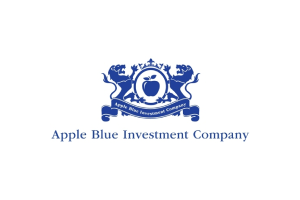


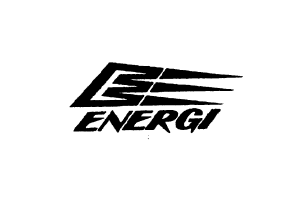
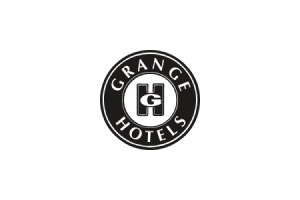
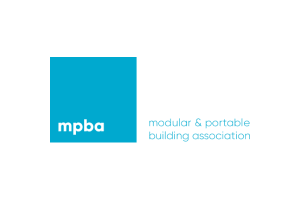

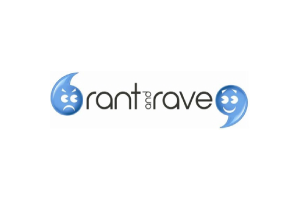
Book your FREE consultation session
Need some advice? Got some burning questions that you want answering?
It only takes two minutes


